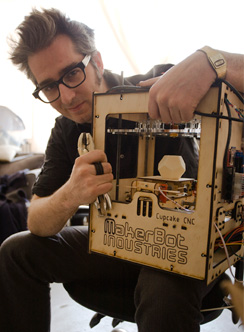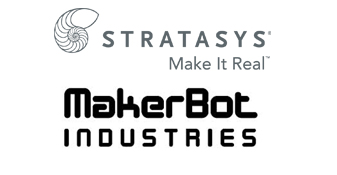The Trials and Tribulations of MakerBot

Bre Pettis, founder of MakerBot.
Latest News
October 9, 2015
In 2009, a small company named MakerBot began to ship out their first 3D printer kits. The Thing-O-Matic was such a large success the company couldn’t keep up with orders, and reached out to existing customers to help print parts for new kits. By 2012, MakerBot had established itself as a darling of the maker community, and its future looked bright.
Fast forward to 2015, and the company is cutting 20% of its work staff, only a few short months after it cut a previous 20% and closed all its retail stores. What happened? Is this the end of the consumer 3D printer, or is MakerBot itself the author of most of its woes?
 Bre Pettis, co-founder of MakerBot.
Bre Pettis, co-founder of MakerBot.The home 3D printer market seems to be doing just fine. It continues to grow, according to Wohlers Report, and continues to baffle experts that expect the entire market to fold at any time. 3D Systems certainly isn’t giving up on the home market. Rather the opposite, it continues to expand the potential for what can be accomplished with a home 3D printer.
Is MakerBot’s decline Stratasys’ fault? It could certainly be argued that — in media coverage anyway — MakerBot appeared to do better prior to the acquisition than as part of a larger corporate structure. But the MakerBot was showing signs of a shift before then. Print the Legend is a fascinating chronicling of MakerBot just prior to its acquisition. One of the biggest causes for upheaval within the company before the recent employee cuts was when the decision was made to move from open source to proprietary technology. That single move alienated much of the maker community, which let its frustration be known via many online forums after years of supporting and collaborating with the MakerBot team.
The acquisition by Stratasys came close enough on the heels of that decision to give MakerBot, and co-founder Bre Pettis in particular, a bad name with some of their former fans. To many ex-MakerBot owners it felt like a betrayal. Imagine the reaction if Steve Jobs had sold Apple to Microsoft and you have an idea of the emotions involved.
Hurt feelings can’t account for the entire loss of revenue though, right? True enough. Another problem MakerBot faced was cost. It’s easy to zip out a 3D printer kit for next to nothing when your staff consists of three guys in a basement. Costs go up exponentially as a company grows and expands operations.
This isn’t a problem unique to MakerBot either. There’s a reason why Kickstarter is one of the most popular places to buy a home 3D printer. Startups offer ridiculous deals during their campaigns that no established company would want to match. A 3D printer for $200? It’s happened.
MakerBot isn’t out of the game, but it’ll take a major effort to keep the MakerBot label from becoming just another brand offered by Stratasys.
Below you’ll find a video from the dawn of MakerBot time.
Subscribe to our FREE magazine, FREE email newsletters or both!
Latest News
About the Author
John NewmanJohn Newman is a Digital Engineering contributor who focuses on 3D printing. Contact him via [email protected] and read his posts on Rapid Ready Technology.
Follow DE





